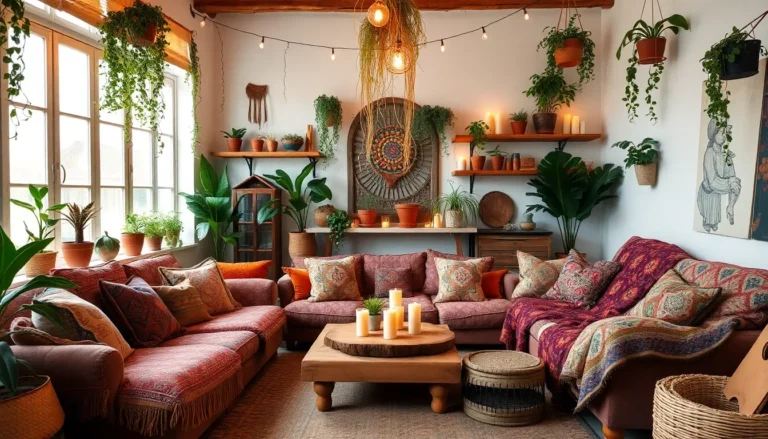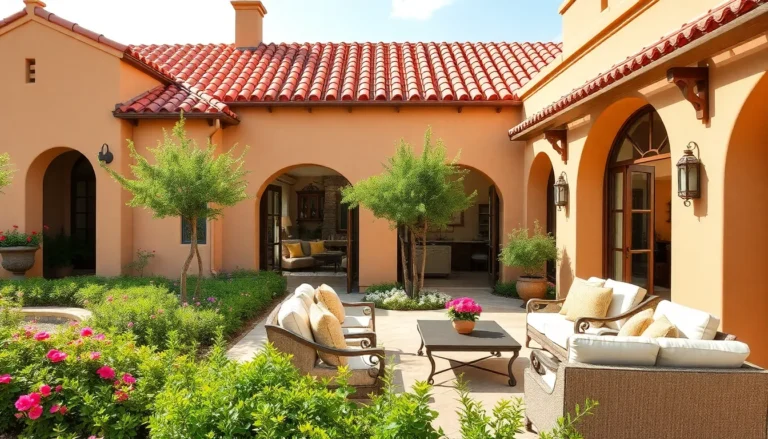Table of Contents
ToggleIn a world that often celebrates boldness and edge, softness in styling sneaks in like a cozy sweater on a chilly day. It’s all about embracing the gentle touch—think flowing fabrics, pastel colors, and relaxed silhouettes that whisper comfort while still making a statement. Who says you can’t look fabulous while feeling like you’re wrapped in a cloud?
Understanding Softness In Styling
Softness in styling represents a significant shift in fashion, highlighting comfort alongside aesthetic appeal. This approach emphasizes gentle elements that enhance both personal expression and ease of wear.
Definition And Importance
Softness in styling refers to the incorporation of light, airy elements into clothing design. Characteristics include flowing fabrics, pastel colors, and relaxed fits that prioritize comfort. This trend allows individuals to express their personal style without sacrificing ease of movement. The importance lies in its versatility; softness can elevate everyday outfits, making them suitable for various occasions. As a result, comfort-driven fashion resonates with a wide audience, appealing to those valuing coziness without compromising on style.
Historical Perspective
Softness in styling emerged in the late 20th century as a counter to formality in fashion. Initially, minimalistic trends favored structured silhouettes and bold designs. Soft elements gained popularity in the 1990s with the rise of casual styles rooted in grunge and bohemian influences. Over time, designers embraced gentler approaches, incorporating softer fabrics and feminine colors into collections. This historical shift reflects societal changes, where comfort became increasingly valued. Today, softness continues to evolve, influencing modern-day trends and ensuring it remains relevant in contemporary fashion.
Key Elements Of Softness In Styling
Softness in styling integrates various elements, notably fabric choices and color palettes. Each component contributes to the overall aesthetic, enhancing comfort and versatility.
Fabric Choices
Soft, flowing fabrics create a gentle appearance. Materials such as cotton, linen, and silk provide comfort while ensuring a chic look. Choosing lightweight textures promotes ease of movement, enhancing wearability. Textured knits add dimension without compromising softness. Incorporating layers with sheer fabrics introduces airiness, helping create an inviting outfit. Fabrics like jersey or modal drape well, ensuring flattering silhouettes.
Color Palettes
Softness reflects in color choices as well. Pastel shades such as lavender, blush, and mint evoke tranquility. Off-white and light gray imply subtle elegance, enhancing the soft aesthetic. Muted tones create a harmonious and calming palette, inviting personal expression. Combining these lighter colors with gentle patterns adds depth without unnecessary boldness. Soft earth tones, like beige and soft sage, contribute to the overall serenity, making outfits approachable.
Techniques To Achieve Softness In Styling
Achieving softness in styling involves strategic choices in layering and textures, as well as careful selection of accessories and details.
Layering And Textures
Layering plays a crucial role in creating softness. Start with lightweight base layers, then add flowing outer pieces for depth. Pairing soft fabrics like cotton and linen with textured knits enhances visual interest. Consider sheer tops or cardigans to introduce airiness. Fabrics that drape gently, such as chiffon and silk, evoke a sense of elegance. Incorporating different textures prevents outfits from appearing flat. Mixing patterns with soft visuals adds uniqueness without overwhelming the look. Combining various elements results in a chic, approachable style.
Accessories And Details
Accessories significantly enhance the overall softness of a look. Lightweight scarves in pastel colors tie outfits together while providing warmth. Jewelry, like delicate necklaces and subtle earrings, adds interest without overpowering the ensemble. Opting for soft-hued bags and shoes creates a coordinated appearance. Simple details such as fringing or soft florals can elevate an outfit’s charm. Embracing minimalism in accessories keeps the focus on the overall soft aesthetic. Thoughtful layering of accessories offers visual harmony, ensuring cohesiveness across the outfit.
Softness In Styling Across Different Contexts
Softness in styling finds expression across various settings, enhancing overall comfort and aesthetic appeal.
Casual Wear
Casual wear often embraces softness through relaxed silhouettes and lightweight fabrics. Flowing dresses and soft-knit sweaters exemplify this trend, providing ease during everyday activities. Pastel colors, such as soft peach and light blue, enhance visual comfort and promote a laid-back appearance. Effortless styling combines items like oversized cardigans with joggers, achieving a chic yet cozy look. With breathable materials like cotton and linen, individuals remain comfortable while expressing personal style.
Formal Attire
Formal attire increasingly incorporates softness, breaking away from rigid silhouettes. Designers favor elegant fabrics such as silk and georgette for evening gowns and tailored suits. Dresses with soft drapes and muted color palettes, like blush and cream, create a sophisticated ambiance. Layering lightweight shawls over structured pieces further enhances softness, providing visual interest. Accessories like delicate jewelry and soft-hued clutches complete these looks, marrying elegance with comfort for various occasions.
Conclusion
Softness in styling represents a refreshing shift in fashion that prioritizes comfort without compromising on style. This trend embraces gentle fabrics and soothing colors, allowing individuals to express their unique personalities while feeling at ease. By integrating soft elements into wardrobes, one can effortlessly transition between casual and formal settings, showcasing versatility and elegance.
As the fashion landscape continues to evolve, the emphasis on softness remains relevant. It invites everyone to explore new ways of dressing that celebrate both comfort and aesthetic appeal. The journey towards a softer wardrobe not only enhances personal style but also reflects a broader cultural appreciation for ease and tranquility in everyday life.







